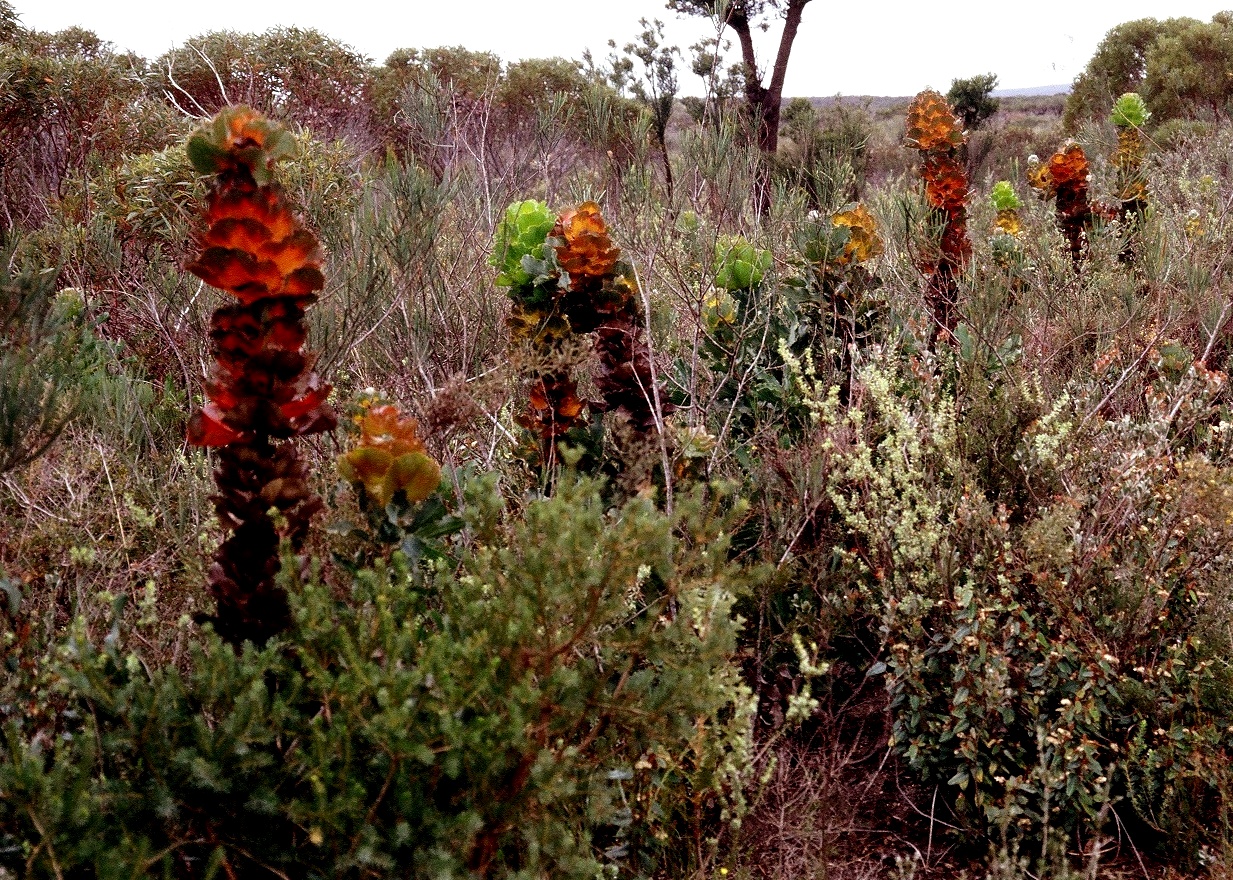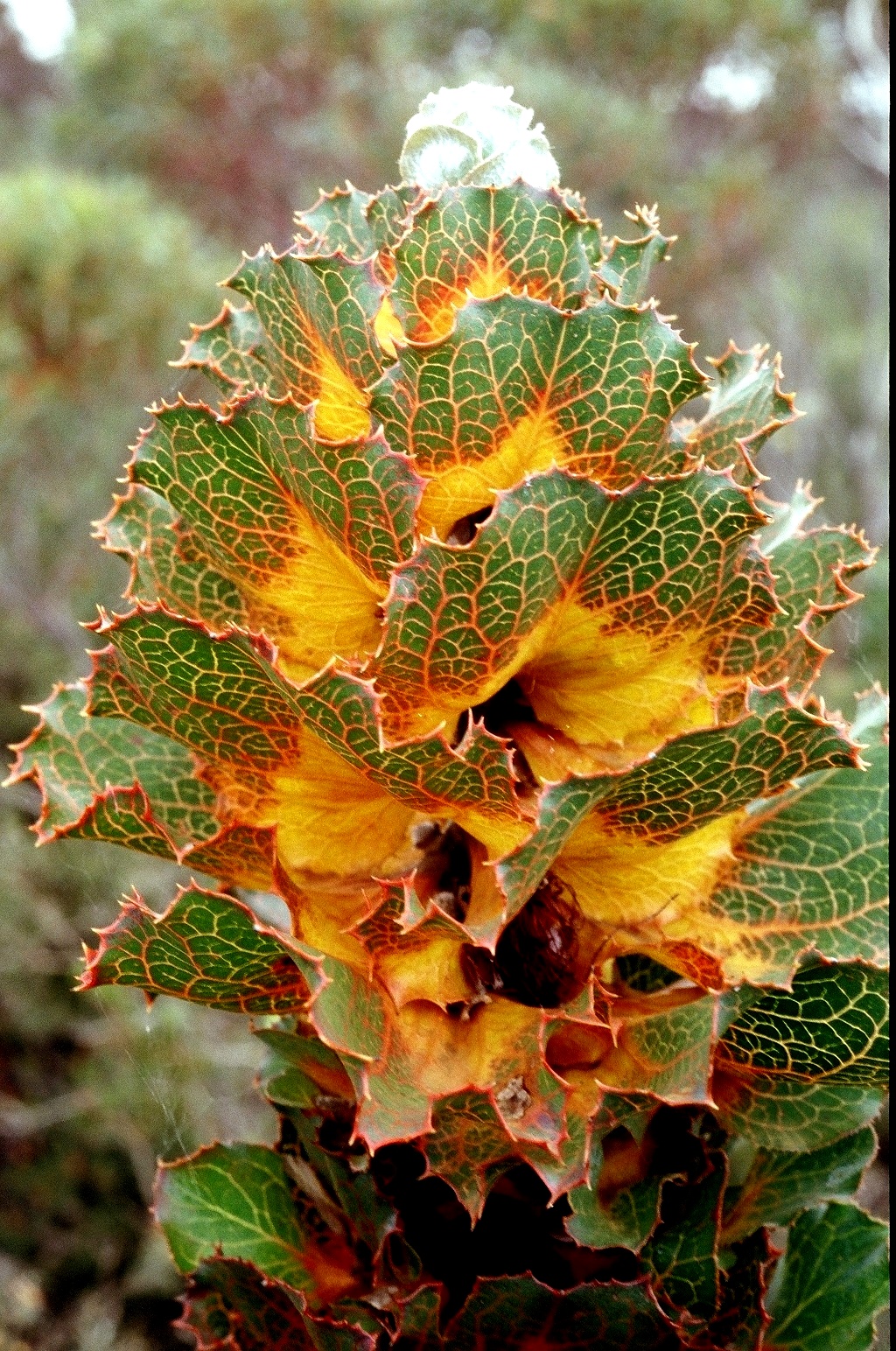Royal Hakea, Plant of the Month
Royal Hakea, Fitzgerald NP WA (credit: SWP Media)
The super-sized continent of Gondwanaland separated ~550 million years ago into Africa, Madagascar, India, Antarctica, and Australia. The continental plates that fractured Gondwana carried these massive sections into their current positions in the southern hemisphere. These landmasses also carried along with them as they migrated the plants that dominated Gondawanaland. Many of the species still exist today. The remnant flora of Australia includes many of them. In particular, the southwester corner of Western Australia's is one of these locations. a member of an equally ancient and strange family of plants, the Proteaceae. Named for the classic Greek god Proteaus, who had the ability to change his form at will
The biodiversity of plants there is considered one of the world's biological hotspots. Many of the plants there are found nowhere else on Earth. Many of the species are now threatened or endangered but offer good opportunities for growing in home landscapes in the appropriate environments.
A species in the genus Hakea is especially unusual but difficult to grow outside its native habitat, the Royal Hakea (Hakea victoria) the Royal Hakea, is one of the plants of the Gondwana flora protected in several national parks in Western Australia. Within the landscapes where it still grows you might imagine some equally strange beasts to wander.

Royal Hakea landscape, Fitzgerald NP, Western Australia (credit: SWP Media)

Hakea victoria close-up, Fitzgerald NP, WA (credit: SWP Media)
For these and other reasons, the Royal Hakea is the Plant of the Month. These ancient species and many others have existed for millions of years surviving many threats. A question remains if they will survive the climate changes that are now unfolding. It certainly would be nice if they were able to do so. WHB